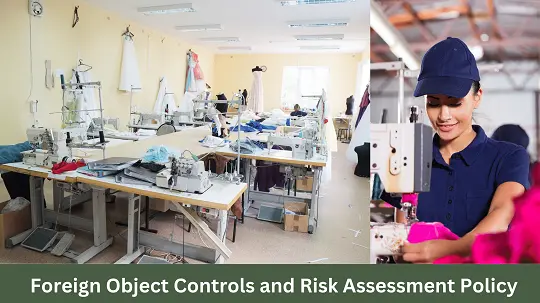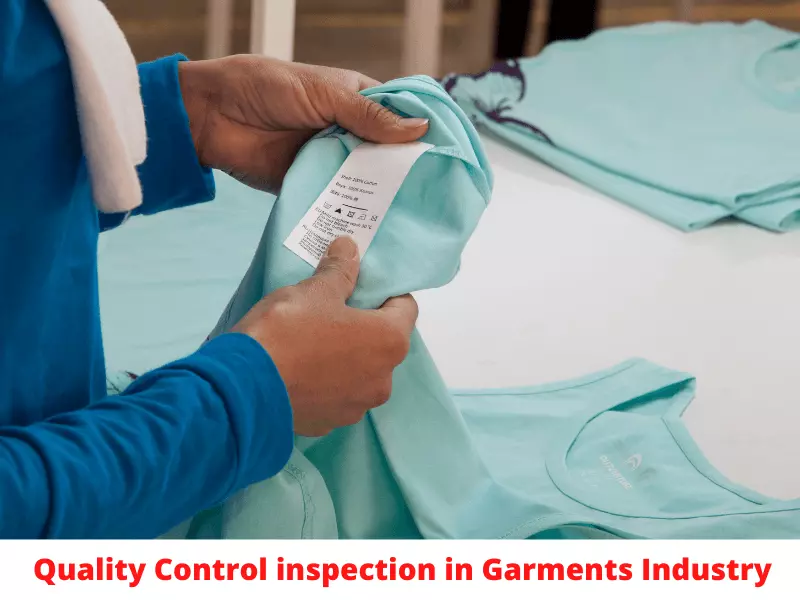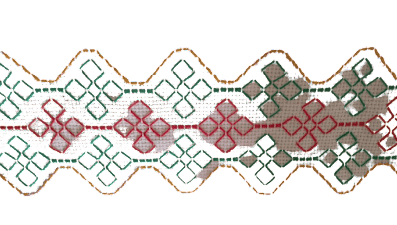Foreign Object Controls and Risk Assessment policy and procedure in the Garments Industry
The objective is to foreign objects near the production area, reduce the risk of contamination or damage to the product, and subsequently reduce the risk of harm or damage to the consumer. This policy must be observed in all workplaces where foreign objects are used in the Garments industry. HR, admin & compliance team is responsible for the implementation and monitoring of the procedure. In this article, we explain details on the Foreign Object Controls and Risk Assessment policy and procedure in the Garments Industry.

Foreign Object Controls and Risk Assessment policy and procedure in the Garments Industry
- Glass/energy-saving lamps can be broken after installation due to accidental impact, severe weather events, damage, or improper glazing conditions as well as for other reasons. Regardless of the type of glass, broken glass can pose a risk of injury and property damage.
- When glass or fluorescent / energy-saving light is broken the area should be blocked off to prevent glass-related injuries. If the cause of breakage is not readily apparent, photographs may be required to assist in determining the cause of breakage. Once the area is secured, an immediate cleanup and replacement of the broken glass should be initiated.
- Workers should use proper protective equipment such as, but not necessarily limited to, gloves and eye protection” Openings created after glass or lamp breakage may require boarding up to maintain security” in some cases, the frame may retain or partially retain the broken glass” in order to protect people who may come in contact with the glass/lamp, the broken glass or lamp particle should be removed and replaced with new glass or light.
- Where the glass broke, separate the spot. Close any doors leading to the area where the cut glass is located and block any open entrances. If there are any workers/employees near the glass, get them out of the area where the broken glass is.
- Broken glass is sharp and will cut through the skin. To clean up broken glass, make sure that the cleaner wearing rubber gloves’ always wear shoes who are near broken glass. Never kneel on areas where broken glass is located.
- Do not pick up broken pieces of glass and any sharp or lamps particles with bare hands. Put on heavy leather or safety gloves before handling glass pieces and try to sweep or vacuum up as much of the broken glass as possible without touching it.
- Keep all the workers well away from the affected areas. If possible affected area should be barrier with a rope or restricted.
- Fluorescent/energy saving lamps have several hazards if broken. Depending on the type, there may be a partial vacuum or the lamp may be under pressure. Breaking the glass can cause shrapnel injuries, along with release of mercury and other hazardous compounds. The biggest immediate injury threat from a broken lamp is from the phosphor-coated glass. If cut with fluorescent lamp glass, any phosphor that gets into the wound is likely to prevent blood clotting and will interfere with healing. Such injuries should be treated seriously and immediate medical attention should be obtained for people or pets that are cut. Medical personnel should be informed that the injuries were caused by a broken fluorescent lamp, and that mercury was present.
- If a window breaks, make sure to check for broken glass inside the work area within the frame of the window and outside the window area on the ground.
- To dispose of glass or lamp, carefully put it in a durable container (such as a strong box or plastic container) and label” broken glass/lamp” Do not put glass shards or pieces in plastic bags.
- To clean up small particles of glass/lamp, use several thicknesses of wet paper towels and then discard safely” cloth napkins, cloth towels, sponges or ordinary mops should not be used for clean up because they can harbor tiny glass particles.
- Remove the big shards individually. Carefully put each piece of glass into a empty coffee tin, or a plastic container thick enough so that the glass doesn’t cut through. If you don’t have anything that glass won’t cut through, such as a plastic bag, wrap the pieces of glass into thick layers of newspaper, then put the wrapped glass into a plastic bag.
- Avoid using a vacuum cleaner” sucking up pieces of glass with a vacuum cleaner may seem tempting, but it may ruin the machine.
- Further any necessary or emergency contact with HR, admin & compliance team.
The safety and quality of clothing can be seriously threatened by foreign objects (FO). In order to prevent contamination and guarantee customer safety, a strong Foreign Object (FO) Controls and Risk Assessment policy is necessary. Garment producers may guarantee the quality and safety of their products and drastically lower the danger of contamination by putting in place a thorough FO Controls and Danger Assessment program. That’s all on the Foreign Object Controls and Risk Assessment policy and procedure in the Garments Industry in our blog.
- You would love to read: Needle Management Procedures in the Garments Industry
- Metal Detection Process: Calibration and Metal Detector Maintenance in the Garments Industry
- Metal Contaminated Garments Disposal Procedure in the Garments Industry


